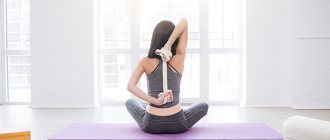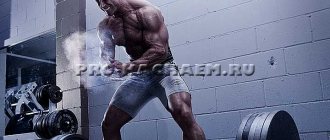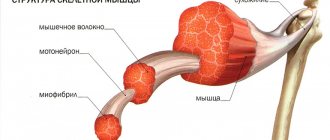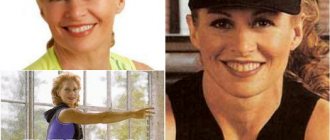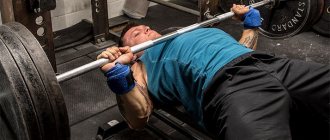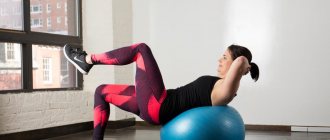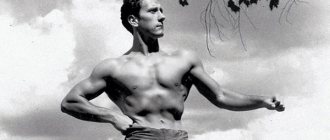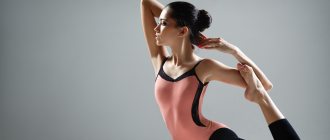Most often, women suffer from excess weight. And on this basis many complexes arise: you don’t want to look in the mirror, you don’t want to leave the house either. There is only one thought spinning in my head: getting rid of the hated rolls of fat.
It’s good if time and money allow you to go to the gym. And if not? So stay fat, hate yourself for it and worry? No, let’s not let fat ruin our full life!
We buy a fitball and do gymnastics with the ball. Don't know how it is? We'll tell you everything.
Choosing a ball
Where does it all begin? From choosing a comfortable fitness ball for future activities.
There are several diameters. The smallest is 45 centimeters, the largest is 95 centimeters. The dimensions of a gymnastics ball are very important. A ball that is too small may not be able to withstand the load; a ball that is too large may be difficult to work with.
So, how to choose the best option? The height of the future gymnast is minus one hundred. For example, a woman is 163 centimeters tall. Subtract one hundred, we get 63. This means that the lady needs a ball with a diameter of 65 centimeters.
The main diameters are as follows:
- 45 centimeters;
- 55 centimeters;
- 65 centimeters;
- 75 centimeters;
- 85 centimeters;
- 95 centimeters.
What else, besides the diameter, should you pay attention to when wanting to do gymnastics with a ball? On the quality of the product. When purchasing a ball, pay attention to the abbreviation ABS. This is a Swiss acronym that translates to “anti-explosion system.” Anything can happen, for example, something sharp turned out to be on the floor and pierced the ball. It will not explode, but will begin to deflate slowly. If such letters are missing, it is better to refrain from purchasing. What happens if the ball explodes while doing the exercises? At the very least, fear is guaranteed. And the maximum is a severe injury.
When buying a ball, pay attention to its appearance. There are balls with horns, and some with spikes. The first ones are designed for children. If the purchase is intended for a child, buy a gymnastics ball with horns. It is more interesting for the child to study with him.
The spiked ball is also a massager. Did you catch your eye? Take it without hesitation. Get double the effect without extra expenses.
How to choose a gymnastic ball?
The size of the back massage ball is selected individually.
Fitball cannot be bought by eye. The diameter of the exercise machine is selected strictly according to the person’s height, so that he can exercise comfortably. The main selection criterion: if you sit on the ball, your legs should bend exactly at a right angle.
| Selection options | |
| Children | Diameter 45 cm |
| 150-165 cm | Diameter 55 cm |
| 165-185 cm | Diameter 65 cm |
| 185-200 cm | Diameter 75 cm |
| More than 200 cm | Diameter 85 cm |
Main price criteria: quality of material, size, shape, presence or absence of horns/pimples. The choice of gymnastic ball is always yours.
Leg raises
We take the emphasis while lying down. The starting position is the same as for push-ups. The feet are positioned as close to the edge of the ball as possible. This is where you need to be careful not to slip off your equipment.
Raise one leg up to the highest possible level. We don't bend our leg. We stay in this position for a few seconds and lower our leg. Now it’s the second limb’s turn.
Gymnastics
In rhythmic gymnastics, exercises with a ball are a very beautiful element. How to choose a ball for this sport?
Start by taking a look at the rubber it's made from. It must be of high quality. The quality mark is described above.
The ball should fit in the gymnast's hand so that he does not have to strain trying to catch a slipping ball. The equipment lies freely in the hand, making it convenient to perform the main element. Most often this is an “eight”.
There are three sizes of gymnastics balls suitable for different ages:
- For children from 3 to 7 years old, a ball with a diameter of 15 centimeters is suitable.
- From 8 to 10 years - 17 centimeters.
- From 10 years and older - 18.5 centimeters.
Of course, the child’s appearance should also be taken into account. If he is short, although he is in the older age group, then it is better to purchase a ball for the middle group. If the child is still small, but large, then you can buy a larger ball. The main thing is that the future master of sports in rhythmic gymnastics should feel comfortable working with him.
Exercises for the spine on a gymnastic ball
On the Internet you can find many methods of exercising with a back massage ball, which are indicated for various diseases of the musculoskeletal system or for their prevention.
Exercises with a fitball to relax muscles:
- Lie on the ball, supporting yourself on your feet. Roll on the ball in a circular motion, stretching your back;
- Lie with your stomach down and completely relax, holding in this position for at least 1 minute;
- Lie on your back and then roll onto your stomach. Repeat 10-20 times.
- Exercises with a fitball for scoliosis
- Lie on the ball with your back, supporting your legs. Holding your hands behind your head, you begin to work on your upper abs;
- Get on all fours so that your hands are on the floor and your feet are on the fitball. Take 10-20 steps with your arms, and then the same number of push-ups.
- A set of exercises for spinal hernia
- The essence of all exercises is that a person must sit on a ball. In this case, the back is kept straight, the legs are at right angles. Exercises can be different: head tilts, rotational movements, torso bends;
- Movements on the back and stomach are also indicated for hernia, but here it is important to know how to perform them correctly.
Video: exercises with a fitball for a herniated disc
- Exercises for babies
- Fitball exercises for infants are aimed at relaxing the flexor muscles, which are maximally tense at an early age. The exercises begin with the baby being placed stomach down on the ball and starting to roll in different directions. At the same time, the baby should not cry or scream.
- Video: exercises for treating the back with a fitball
https://youtu.be/qqB9yl5_ayQ
- Video: exercises to strengthen back muscles
Choosing a ball for rhythmic gymnastics
How to choose a ball? First of all, focusing on the requirements of the International Gymnastics Federation. The ball must have a certain diameter, length, and be made only from approved material.
Check out the Sasaki gymnastics ball. Manufacturer: Japan. This ball is very popular among gymnasts. It has a very smooth, but at the same time quite sticky surface. The color is rich, which is important in gymnastics. No special care is required for the ball. You just need to wipe it with a damp cloth and pump it up in time with the special pump that comes with the kit.
Breathing exercises
How to choose a ball for breathing exercises? And what is it for? First of all, to develop proper breathing. Breathing exercises with a ball are widely used in rehabilitation centers. Proper breathing serves as an impetus for the functioning of the entire vital system of the body. If there is a violation of any physiological process, then such exercises are used as rehabilitation.
They are also popular in fitness rooms. They conduct breathing exercises with a ball in schools, kindergartens and institutes. It is recommended to work with very young children, teaching them to breathe correctly.
What should a breathing exercise ball be like? Its diameter is no more than 30 centimeters. It's better to take Italian balls. They are high quality, made of durable material, durable.
List of exercises with the ball
List of exercises with objects.
As general developmental exercises are mastered, exercises with objects are increasingly carried out. This arouses children's interest in knowledge and has a significant impact on the development of abilities such as endurance, agility, speed, courage and perseverance. Active actions with objects in the process of their use contribute to the knowledge of weight, shape, quality of material and other properties of objects. Action with objects creates the opportunity to achieve greater clarity of motor ideas, which are based on various sensations and perceptions.
Visual perceptions create an image of movement in its dynamics, expressiveness, and spatial relationships. Objects create a kind of visual direction in the development of spatial orientations and contribute to better coordination of movements of individual parts of the body.
Hearing allows you to perform movements in a certain rhythm and tempo. Some objects (for example, a jump rope and a ball) contribute to the clarity of these perceptions.
Muscle sensations signal the position of body parts, muscle tension, and a complex process of coordination occurs in the work of individual muscle groups.
Since exercises with objects require the work of the fingers to one degree or another, it activates the activity of the analyzer systems and improves the coordination of finger movements, which is very important for the child’s educational activities.
When performing exercises with objects, educational tasks are also solved: children learn to handle them carefully, carefully, take them and put them in place in an organized and quick manner, and assist the coach.
Along with the general influence, each of the objects, depending on its physical properties, has a unique effect - movement acquires smoothness or sharpness, clarity, strength, etc.
Ball exercises
The ball is a constant companion of children’s games; it satisfies the child’s active desire for movement. Exercises with the ball prepare for throwing, contribute, first of all, to the development of coordination, dexterity, speed of movement, speed of motor reaction, development of the eye, and orientation in space. At the same time, all the muscles of the torso, legs, arms, hands receive a good load, because The child actively performs a variety of rapidly changing movements.
In classes with children 5-6 years old, it is best to use rubber balls with a diameter of 8-12 cm. When performing exercises with a ball, it is necessary to maintain correct posture, accompany the movement of the ball with movements of the torso and head, and gradually increase the amplitude of movements.
It is recommended to study exercises with the ball in the following sequence: methods of holding the ball, passing, throwing and catching the ball, hitting the ball, rolling and twisting.
Ways to hold the ball:
- Place the ball loosely in your palms, spread your fingers and slightly bend them to the shape of the ball, but do not squeeze it.
- Support the ball with your fingers from the sides, do not touch it with your palms.
- The ball lies on the back of the hand with the fingers extremely extended.
In addition to this, the hold can be carried out by separate parts of the body and performed with a reverse grip.
Passing the ball
. This is the main connecting element that requires confident execution with both the left and right hands. The pass can be performed from palm to palm, in different grips, using different parts of the body. At the same time, the unity of the movements should not be disturbed.
Sequence of training:
- I.p. - arms to the sides, ball in the right. 1-2-hands down, pass the ball to the left hand; 3-4-hands to the sides; 5-6-hands forward, pass the ball to the right hand; 7-8-ip.
- I.p. - stand with legs apart, hands below, ball in the right. 1-2 - rising on your toes, arching to the side and arms up, pass the ball to your left hand; 3-4 - lower your entire foot, arms down; 5-8 from the other hand.
- I.p. - kneeling, arms to the sides, ball in the right. 1-2 - sitting on the heels with the torso tilted in front, pass the ball behind the back to the left hand; 3-4-sit up in a kneeling position, arms to the sides; 5-8, the same on the other hand.
- IP - legs apart, arms to the sides, ball in the right. 1-2 - bend in front - to the right, pass the ball to the left hand behind the right leg; 3-4 - straighten up, arms to the sides; 5-8 is the same with the other hand.
- IP - arms to the sides, ball in the right. 1-2 - ball on the left, bend the right hand at an obtuse angle and pass the ball under the foot to the left hand; 3-4 - lower the right in IP, arms to the sides ; 5-8 on the other leg.
- I.p. - stand with legs apart, arms to the sides, ball in the right. 1-2 - tilt to the left, pass the ball over your head to your left hand; 3-4 - straighten up, arms to the side; 5-8 - the same, but On the other side.
- IP - kneeling, legs apart, arms to the sides, ball in the right. 1-2 - with the body turned to the right, put the ball on the floor between the feet; 3-4 - with the body turned to the left, kneeling, hands to the sides; 5-6 - with the body turned to the left, take the ball with the left hand; 7-8-p., the ball in the left hand.
- IP - lying on your back, arms to the sides, ball in the right; 1-2 - bend your legs and put the ball on your shins; 3-4 - arms to the sides; 5-6 - take the ball with your left hand; 7-8- straighten your legs, arms to the sides. Then do the same with your left hand.
- I.p - ball in the right hand. 1-2 - stand on the left, bend the right one forward and put the ball under the knee (hold it); 3-4 right back, arms to the side (bend); 5-6 - bend right forward, take the ball with your left hand; 7-8 – IP, ball in left hand. Do the same on the other leg.
- I.p. - legs stand apart from the column in a step with each other, arms up, a large ball in front. Passing the ball back over the head. When the ball reaches the last child in the column, all children turn in a circle and, leaning forward, pass the ball back between legs
Throwing and catching.
Throwing and catching are performed with one or two hands up or in an arc in different directions.
When throwing and catching the ball, your arms should not be overly tense. The throw is preceded by a preliminary swing (the hands go down slightly below the point), and the accuracy and amplitude of the throw are ensured by sharper movements of the hands in the final phase of the swing movement. Throws are also accompanied by springy movements of the legs and torso.
When catching the ball, it should be taken into account that the speed of its fall is quite high and the ball can bounce off after touching the palm. This rebound must be softened by moving the hands towards the ball, which is intercepted through the fingertips on the palm, and then the hands are lowered to the bottom. You cannot grab the ball with your fingers.
Sequential training:
- An imitation exercise aimed at mastering preliminary and accompanying hand movements in combination with springy hand movements (at the beginning without the ball, and then with the ball, but without throwing).
- I. p. - hands with the ball below. A small throw of the ball from above, catching it after hitting it on the floor. Then I do the same, but I throw and catch with one hand. Monitor the accuracy of the throw, gradually increasing the amplitude.
- I. p. - the same. A small throw of the ball from above, catching it without hitting the floor with both hands. Next, throw with one hand, and catch first with two, and then with one.
- I. p. - standing in pairs, facing each other at a distance of 2 meters, one of the partners has the ball. Throw the ball forward and upward with both hands to your partner. Catch the ball first after hitting the floor with both hands, then with one hand. To complicate the exercise, throw and catch with one hand.
- I. p. - the same. Do exercise 4 but both partners have the ball.
- I.p. – arms to the sides, ball in the right. A slight upward throw of the ball by catching it with the same hand, and then passing the ball with the back to the other hand.
- I.p. – stand with legs apart, arms to the sides, ball in the right. Throws the ball in an arc to the bottom and overhead into the other hand.
- I.p. – arms to the sides, ball in the left. Bending your right hand forward, throw the ball under your foot and then catch it with your right hand. Then also from the other leg.
- I.p. – Hands forward, ball on palms. Alternating between throwing the ball up and catching it on the back of the hands, followed by a small throw and catch on the palm.
- I.p. - ball in two hands behind the back. Springing, throwing the ball up and forward, catching with both hands.
As you master throwing movements, they should be performed from various starting positions, in combination with steps, jumps, turns and other elements. At the moment the ball flies, you can clap your hands in front of you, squat, etc.
Bouncing the ball.
These exercises are specific to the subject. They are especially effective when performed with music.
The ball can be bounced with one or two hands, in front of you or from the side, one or more times in a row, vertically or at an angle. Chops can also be performed with different parts of the body.
Hitting the ball is accompanied by a holistic spring movement with the whole body and especially the hand performing the rebound. The hand should follow the ball as long as possible, thereby ensuring the accuracy of its movements. You need to catch the ball without tension, holding it in your palm. To do this, before catching, you need to make a small arc with your hand around the ball. Since the height of the rebound is directly dependent on the force of the blow, children need to master hitting the ball in equal rhythms: stronger and weaker, faster and slower.
Sequence of training:
- Hitting the ball on the floor with both hands. After each hit, catch the ball in the palm of your hand.
- Perform exercise 1, but hit and catch the ball with one hand.
- I.p. – stand with legs apart, arms to the sides, ball in the right. Hitting the ball at an angle to the left, catching it with the left hand. The same in the other direction.
- I.p. - standing in pairs, facing each other at a distance of 2 meters, one of the partners has the ball.
- I.p. - the same. Perform exercise 4, but both partners have the ball.
- I.p. - stand with legs apart, right hand with the ball forward, left hand to the side. Hitting the ball at an angle back (between the legs), turning in a circle and catching it with the left hand. Then from the other hand.
- I.p. – right hand with the ball forward, left hand on the waist. Several hits of the ball in a row. Then also with the left hand.
- I.p. - the same. Alternately hitting the ball with the right and left hands.
- I.p. - too. Alternately hitting the ball with the right hand: palm, fist, elbow. Also with the left hand.
- I.p. - the same. After hitting the ball, turn it 360 degrees, and catch it with your left hand. And then also from the other hand.
- I.p. - a ball in both hands. Simultaneously hit the balls on the floor and catch them with each hand.
- I.P. - the same. Simultaneously hitting the ball at an angle. When catching, the ball must go from the right hand to the left and vice versa.
Ball rolls.
Ball rolls can be performed on the floor and on various parts of the body (arm, leg, back, chest, etc.). Rolls should be smooth, without shocks.
When rolling on the floor, the movement and direction of the ball is set with a slight push of the finger. They also meet the ball with their fingers, placing their hands under it. When rolling the ball over your hands or other parts of the body, you must either stop it at a certain point or catch it after dropping it to the floor. With children 5-6 years old, you can also roll the ball with your hands when it is held between your palms: one palm is under the ball, the other is above it, and your arms are slightly bent at the elbow joints. The rotational movement is either inward or outward. In this case, the hands move around the rotating ball and do not separate from it.
Sequence of training:
- IP - sitting on his heels in two ranks facing each other at a distance of two meters, hands with the ball to the right. Rolling the ball across the floor to a partner.
- I.p. – sitting on your heels, right hand to the side, left with the ball on the floor. Roll the ball along the floor to the right, catching it with your right hand and back.
- I.p. – sitting with legs bent, ball on the floor to the left. Roll the ball under your feet into your right hand, and then into an i.p.
- I.p. - squat, arms down, wrinkling in the right. Roll the ball along the floor, forward, straightening up, running after the ball and stopping it in an i.p.
- I.p. the ball is on the floor to the right. Bend over and roll the ball along the floor around your straight legs.
- I.p. – arms forward, ball on the back of your hands. Smoothly raising your arms up, roll the ball up to your chest, then open your arms to the side and catch the ball on the back of your hands after hitting it on the floor.
- I.p. – sitting behind you, ball on your shins near your feet. Raising your legs, roll the ball towards your body, then lower your legs and use both hands to move the ball into an i.p.
- I.p. – arms forward, ball on palms. Raising your arms forward and up, roll the ball up to your chest, then, lowering your arms forward and down, roll it back onto your palms.
- I.p. - Same. Perform exercise 8, but with a small preliminary upward throw.
- Roll the ball between the palms in and out.
Ball twists.
This is the most complex movement, requiring good coordination and a high level of mobility in the joints of the upper limbs.
The directions of twisting are inward and outward, and the movement can occur in a vertical and horizontal plane. Twists are performed in a squat position, with a tense, rounded arm, smoothly and smoothly. The hand moves in an arc with the ball; the ball lies without a grip in the palm of the hand during the entire exercise and does not touch the forearm. The twist can be completed with a slight upward throw of the ball.
Sequence of training:
- A simulation exercise aimed at mastering the movement of the hand when twisting inward and outward in the horizontal plane.
- I.p. – arms to the sides, ball in the right. Perform twisting in a horizontal plane inward and outward. Same with the other hand.
- I.p. - Same. Twist the ball inward in a horizontal plane, and then throw the ball slightly upward. Same with the other hand.
- A simulation exercise that allows you to master the movement of the hand when twisting in a vertical plane inward and outward.
- I.p. – right hand with the ball down to the side, left hand on the waist. Perform twisting in a vertical plane inward and outward. Same with the other hand.
- I.p. - Same. Twist it inward in a vertical plane, and then twist it outward in a horizontal plane. The same with the other hand.
- I.p. – arms to the sides, ball in the right. Twist in a horizontal plane inward, and then twist outward in a vertical plane. The same with the other hand.
Improving ball hits, rolls and twists, they are performed in combination with steps, running, dance steps, turns, etc.
How often should you exercise
In order to lose weight with ball gymnastics, you need to train regularly. For beginners, it would be a good idea to spend two hours a week studying. For more seasoned people, switch to three classes a day. Three times a week, of course. For those who are really, really into a frenzy, you can practice four times.
What do you need to know if you want to lose weight with fitball training?
- We work for quality. What good will it do if someone losing weight does three sets of twenty times, for example, but somehow? It’s better to do two approaches ten times, but correctly and without haste.
- I often feel thirsty during classes. Place a bottle of mineral or boiled water near you.
- After classes, it is not recommended to eat for at least a couple of hours. The same as before training.
- Is your training over? Take a contrast shower. This will help you relax.
- What is the best time to exercise? It all depends on your own convenience. Do you like morning classes? Please. Is it easier to train in the evening? No problem. Listen to your own body: when it feels better, then start training.
- When doing gymnastics with a ball, it is advisable to adjust your diet. Eating chocolate in the evenings and working in the morning is not the best option. Start by stopping eating after 7 pm. Is it completely unbearable to endure hunger? Drink kefir. Gradually eliminate baked goods, fatty and fried foods from the menu.
Contraindications
Gymnastics using a massage ball is contraindicated if you have:
- Individual allergy to polyvinyl chloride;
- Unfixed deformities of the feet and fingers;
- Open, festering wounds on the feet.
Let's summarize
We talked about what exercises for losing weight on a fitball exist. We learned that there are large and small gymnastics balls, and how to choose them. We also talked about balls for breathing and rhythmic gymnastics.
Key aspects:
- Exercises on a fitball are performed with caution. Do not forget that working with the ball requires certain clothing to avoid injury.
- When buying a ball, be sure to choose one with the letters ABS on it. Why is explained above.
- If you have the opportunity to purchase a ball with spikes, take it and don’t hesitate. Get an exercise tool and a massager in one product.
